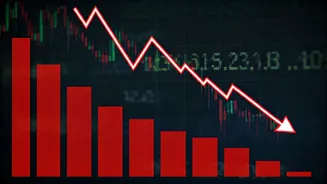Record Gold Imports
India's gold import figures for October painted a remarkable picture. The value of gold entering the country soared to an unprecedented $14.72 billion.
This substantial figure reflects a notable increase in the demand for gold within the Indian market. The significant inflow of gold signifies its enduring appeal as an investment and its crucial role in cultural and festive traditions. The surge in imports not only affects the balance of trade but also influences domestic gold prices and the broader economic landscape. The factors contributing to this record-breaking import level encompass a variety of elements, which include the prevailing price of gold on the global market, the seasonal demand associated with the festive season, and the investment preferences of Indian consumers.
Factors Driving Demand
Several key elements are contributing to the soaring demand for gold in India. The period leading up to the festive season, including Diwali and other significant celebrations, tends to see a surge in gold purchases, driven by cultural customs. Furthermore, gold serves as a safe-haven asset during times of economic uncertainty, which has driven investment demand. Global gold prices also affect local demand, with lower prices often encouraging more imports as a result. Additionally, changes in government policies, such as import duties and regulations, could influence the volume of gold entering the country. The confluence of these factors has created a perfect storm for record-breaking gold imports. The specific blend of drivers will vary across time, reflecting the changing dynamics of the Indian economy and global trends.
Economic Implications
The significant rise in gold imports has multiple economic implications for India. Increased imports contribute to a widening of the current account deficit, potentially weakening the rupee against the US dollar. Conversely, the demand for gold supports employment within the jewelry and related sectors. Also, gold imports indirectly impact inflation, as higher demand can increase the prices of gold within the domestic market. The government's policies play a crucial role, as import duties can be used to control the flow of gold and influence its price. The surge in gold imports, thus, is a complex economic event, with both positive and negative consequences that need to be carefully managed to maintain economic stability and encourage sustainable growth. Policymakers continuously evaluate the effects and apply appropriate measures to counteract any negative impacts.
Market Outlook
Looking ahead, the outlook for the Indian gold market is influenced by several factors. Anticipated shifts in global economic conditions, including interest rate decisions and geopolitical events, will influence gold prices. Domestic demand will be shaped by the success of the monsoon season, which affects rural incomes and consumer sentiment, along with any changes in import duties. The trend toward increased digital gold investments is also likely to reshape the market, making gold accessible to a broader audience. India's evolving role in the global gold market and the ongoing strategies of major players in the gold trade will continue to be a focus for those who participate in the market. The dynamics of gold demand in India will continue to develop, influenced by an intricate network of global and local conditions that shape its investment attractiveness.














